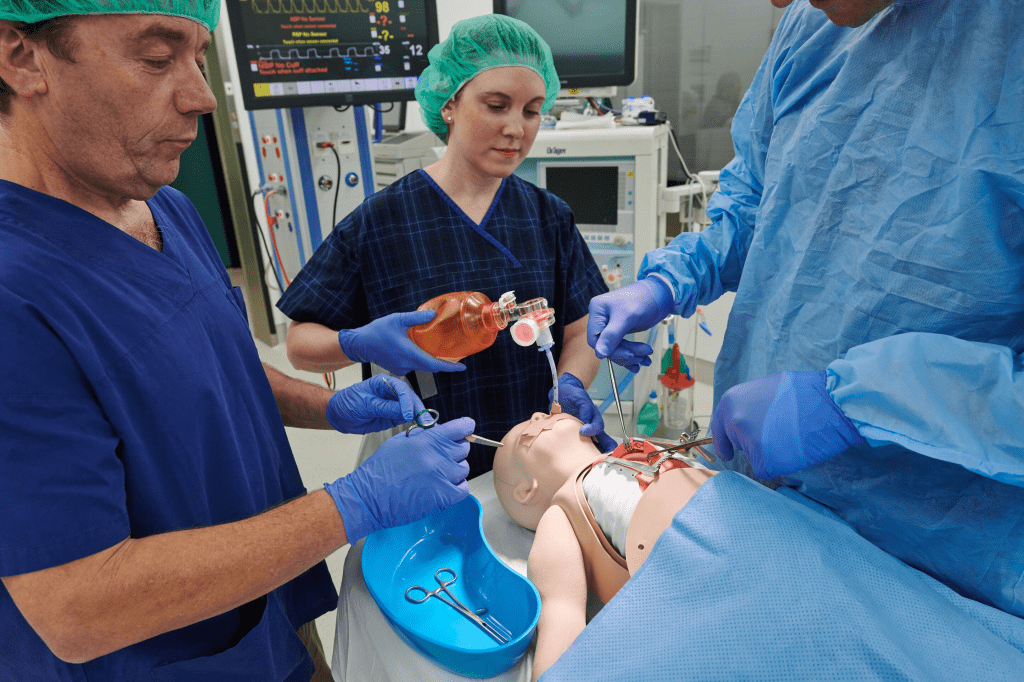
Simulation Training
- Perth Children's Hospital Foundation
Simulation Training
- Perth Children's Hospital Foundation
“We have the ability to stream via audio and visual equipment into other rooms, as training is taking place. This substantially increases the amount of doctors and nurses that can access training. We are also able to create training videos that are used to up skill clinicians around the state. Our staff no longer have to travel to the Eastern States or overseas. This is hugely impactful.” – Dr Ellen Taylor – Consultant, Generaal Paediatrics
The Simulation Suite – known as the Sim Suite – at Perth Children’s Hospital is arguably the best paediatric simulation suite in Australia. It can be used to simulate realistic clinical environments from all over the hospital, enabling health professionals to practice skills, ways of communicating, leadership and teamwork in a safe learning environment for emergency situations or clinical challenges.
The Sim Suite includes a fully fitted out theatre space, a Critical Care cubicle and a mobile unit that can be taken onto wards for training.
“Everything that staff might face when caring for a child with any sort of medical condition can be trained for in our Sim Suite. Thanks to Foundation donors, we are building a bank of extremely important equipment to be used in simulation training. This makes the Sim Suite an extremely powerful tool and, in my mind, the best in the country,” said Dr Ellen Taylor, lead clinician in simulation training at Perth Children’s Hospital.
This equipment includes a surgical simulation mannequin known as ‘Surgical Sam’, a realistic neonatal/infant mannequin known as ‘NenaSim’, additional equipment for training bronchoscopy skills and a high quality camera that allows simulation training to be recorded for future training purposes and reflection.
This is the first time that these mannequins have been used in Australia.
“The purpose of simulation is to improve the quality of care we give to the children and families of WA. That can include skills and drills; how to access a central line, performing a lumbar puncture, all the way through to more complex scenarios involving the mannequins, actors and other participants.”
“Surgical Sam is a more lifelike mannequin that allows us to simulate cardiothoracic surgery and complex anaesthetic situations, such as critically ill children being placed on ECMO, where a machine replaces the function of their heart and lungs. Obviously, in these situations, it is essential to get it right. He also has an airway that feels far more real, so our staff are experiencing simulations that are far closer to that of a real patient.”
“NenaSim is one of the most realistic infant mannequins available. She is tetherless, meaning that she isn’t connected to cords, which makes training even more realistic. Our previous SimBaby looks like a doll. NenaSim looks real. One of her unique functions is her ability to portray respiratory difficulties, which is the most common cause of collapse in children. She has a realistic skin tone and colour changes. This mannequin is a game changer,” said Dr Taylor.
In addition to the world class mannequins, a high quality camera has also been funded meaning the scenarios practiced in the simulation environments can be filmed. Instructors can identify any “gaps” in both the physical tasks required (such as intubation) and body language and tone of voice, which are so important when dealing with children and their families.
